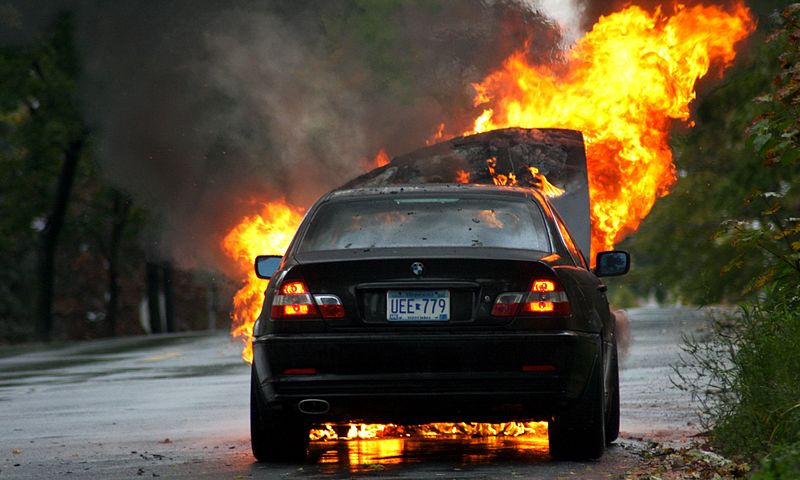In Quadrant, Tim Blair recounts the story of a friend crossing the Sydney Harbour Bridge only to find his vehicle was on fire:
Most of us manage to scrape through life with no such flame-related driving incidents. Future motorists, however, may find themselves more frequently enjoying the occasional car-b-que. That’s because electric cars — the things Labor ruinously attempted to force upon us as part of their spectacular 2019 election campaign disaster — seem to be impressively prone to burning.
Now, an ordinary car fire is not really that big a deal. Catch it early enough and it can be quickly dealt with. But a fire involving an electric car is a whole different matter. Those things are like four-wheeled infinity candles.
In the manner of all the money given to its manufacturer by various governments, an electric Tesla recently torched itself in Austria. The Tesla’s fifty-seven-year-old driver had slid off the road and struck a tree, prompting a fire emergency.
In ordinary car blaze cases, a single fire engine or even a personal fire extinguisher is sufficient to deal with the problem. Electric cars, or EVs, demand slightly more attention when combustion occurs. Here’s an online news account:
In order to put out the fire, the street had to be closed and fire authorities had to bring in a container user to cool the vehicle.
Some 11,000 litres of water are needed to finally extinguish a burning Tesla but an average fire engine only carries around 2,000 litres of water.
The container used is said to be suitable for all common electric vehicles. It measures 6.8 metres long, 2.4 metres wide and 1.5 metres high, it is (obviously) waterproof and weighs three tons.
Moreover, “fire brigade spokesman Peter Hölzl warned that the car could still catch fire for up to three days after the initial fire”.
I’ve owned one or two cars that were sensibly equipped with fire extinguishers. Future motorists may wish to tow around a lake, just in case their earth-friendly electric cars decide to go the full kaboom.





I’m sorry. If the car on fire is the one in the picture, then is’s a gasoline powered car. Not electric. Now, having said that, it would be interesting to know why electric car fires seem more frequent and difficult to put out. Care to talk about that? Solve a problem?
Comment by David Chipman — November 26, 2019 @ 21:18
No, the image is just a normal car fire. I can’t afford to license the images used in most original stories, so I search for public domain or creative commons-licensed works that don’t require payment.
There may be an element of selection bias in the stories we’ve all seen about various brands of electric car spontaneously combusting, but there being so few of them on the road, it would be disturbing if they really are more prone to catching fire. It’s definitely a problem for fire departments, as they don’t carry enough of the “right” chemicals to fight a lithium-ion battery fire, because they encounter them on only a tiny proportion of the calls they attend.
The note in the original story that a burned-out Li-ion fire can re-erupt for up to 72 hours is more than just a wee bit disturbing.
Comment by Nicholas — November 27, 2019 @ 08:44